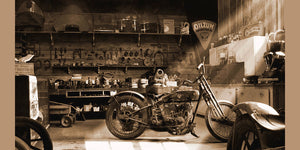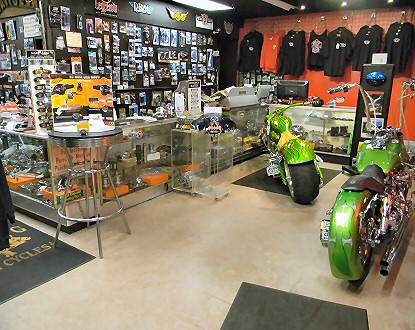Discover the Latest Motocross Gear NZ for every single Level of Rider
Discover the Latest Motocross Gear NZ for every single Level of Rider
Blog Article
Recognizing the Vital Parts of a Bike: A Comprehensive Guide for Enthusiasts
For motorcycle enthusiasts looking to boost their riding experience and ensure their bikes run efficiently, comprehending the vital elements of a motorcycle is critical. Each aspect, from the engine's complex workings to the essential role of the braking systems, not just influences efficiency however additionally safety and convenience.
Engine Elements

The camshaft plays a critical function in controlling the timing of the engine's valves, guaranteeing the exact opening and closing required for efficient fuel and air consumption, as well as exhaust expulsion. This timing is crucial to keeping optimum engine performance and effectiveness. In addition, the carburetor or fuel injection system, relying on the motorcycle model, is liable for mixing air with fuel in the right proportion for burning.
The cooling system, either air or liquid-based, works to preserve the engine's temperature level within operational restrictions, avoiding getting too hot and ensuring durability - motocross parts nz. Each part, diligently developed and integrated, adds to the smooth operation of the engine, defining the bike's power outcome and general performance
Transmission System
Indispensable to the motorbike's functionality, the transmission system ensures effective power transfer from the engine to the wheels. This system makes up several important parts, consisting of the clutch, gearbox, and final drive, each playing an important duty in translating the engine's power right into activity. The clutch, generally operated by a hand lever, serves to disengage the engine and engage from the transmission, permitting smooth equipment adjustments and controlled acceleration.
The gearbox, often described as the transmission proper, contains a collection of equipments that bikers can by hand shift with to readjust the bike's speed and torque outcome. These gears are organized in a sequence that allows the bike to speed up smoothly and keep optimum engine efficiency across various rates. Most bikes make use of a consecutive gearbox, requiring the biker to shift equipments in an established order.
Braking Devices
While understanding the transmission system is essential to utilizing a motorcycle's power, just as essential is the capacity to regulate and quit that power properly, which is where stopping mechanisms enter into play. Brakes are essential for safety and performance, giving the biker with the needed control to browse numerous terrains and conditions. Usually, motorcycles feature two types of braking systems: disc brakes and drum brakes.
Disc brakes are more widespread in modern-day bikes due to their premium performance. This system provides far better heat dissipation, consistent efficiency, and improved quiting power, specifically in damp problems.
On the other hand, drum brakes, though less usual, are still located in some motorbikes. They function by pushing brake shoes versus the internal surface of a drum connected to the wheel. While normally much less reliable in heat dissipation and quiting power, drum brakes are easier and more economical.
Understanding these braking systems' subtleties allows cyclists to preserve their motorbikes appropriately and value the engineering that ensures safe and reliable quiting.
Suspension and Guiding
Suspension and guiding systems are essential elements that considerably influence a motorcycle's handling and trip convenience. The suspension system, being composed of forks at the front and shock absorbers at the rear, takes in road irregularities, improving security and control. Front forks, generally telescopic or upside down, compress and rebound to reduce impacts, while back shock absorbers preserve tire call with the roadway, important for grip and safety and security.
Guiding, focused around the handlebars, links the motorcyclist to the motorcycle's directional control. The guiding head bearings make sure smooth operation, allowing precise ability to move. Appropriate positioning and upkeep of these bearings are important for foreseeable guiding feedback and lowering biker fatigue.
The suspension's adjustability is an additional important element; preload, damping, and rebound settings enable customization to match different riding problems and styles. This versatility is necessary for enhancing performance, whether browsing city roads or dealing with sturdy tracks. Technologies like electronic suspension systems provide real-time modifications, improving ride quality across diverse surfaces.

Electric Solutions
After guaranteeing a controlled and smooth experience with effective suspension and steering systems, attention turns to the electrical systems, a critical aspect of modern-day motorbikes. These systems play a critical role not just in starting the engine but likewise in powering various components that boost the functionality and safety of the bike.
At the heart of a motorbike's electrical system is the battery, which stores electric power needed for beginning the engine and powering complementary systems - mx gear nz. The generator or generator, combined with the rectifier-regulator, guarantees the battery remains billed while the motorbike is in procedure, converting power into electric energy and preserving voltage degrees
The ignition system, one more crucial element, is responsible for sparking the air-fuel combination in the engine's cylinders. Modern motorbikes commonly use a digital ignition system, supplying higher effectiveness and integrity contrasted to traditional systems.
Lights systems, including headlights, tail lights, and signs, are likewise essential, making sure presence and security for the motorcyclist. Extra motocross helmet with goggles digital parts such as sensing units, control devices, and presents add to innovative functions like fuel injection management, anti-lock stopping systems (ABDOMINAL MUSCLE), and electronic control panels, additionally improving the riding experience.
Verdict
A thorough comprehension of a motorcycle's important components, consisting of the engine, transmission system, braking link devices, suspension, guiding, and electrical systems, is indispensable for fanatics intending to optimize safety, efficiency, and convenience. Mastery of these components allows for informed choices regarding maintenance and upgrades, inevitably enhancing the riding experience. By incorporating this knowledge, motorcyclists can ensure their bikes operate at peak effectiveness and dependability, thus making best use of both pleasure and long life of their vehicles.
For motorbike fanatics looking to elevate their riding experience and guarantee their bikes run efficiently, understanding the vital parts of a motorcycle is vital.Indispensable to the motorcycle's capability, the transmission system guarantees effective power transfer from the engine to the wheels.While recognizing the transmission system is key to using a motorbike's power, equally crucial is the capacity to regulate and quit that power properly, which is where stopping mechanisms come into play. Commonly, motorbikes feature two types of braking systems: Source disc brakes and drum brakes.
An extensive understanding of a bike's essential components, including the engine, transmission system, stopping devices, suspension, guiding, and electric systems, is crucial for fanatics intending to enhance comfort, performance, and safety.
Report this page